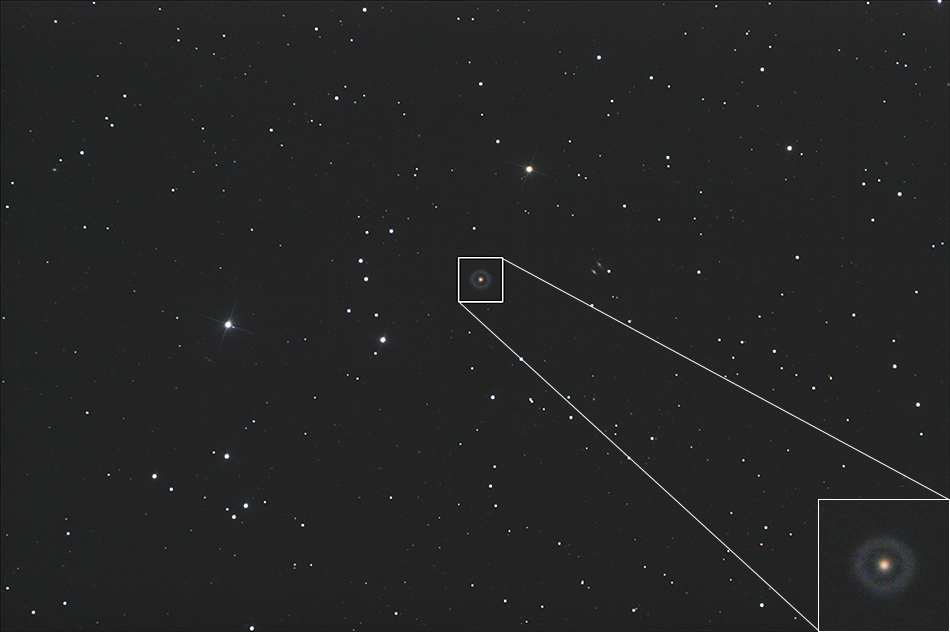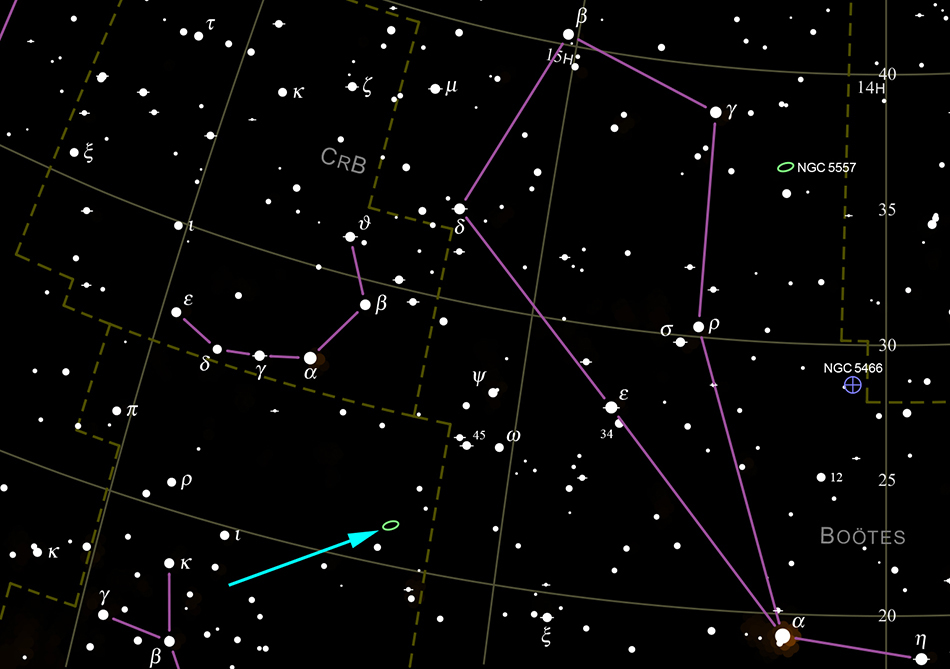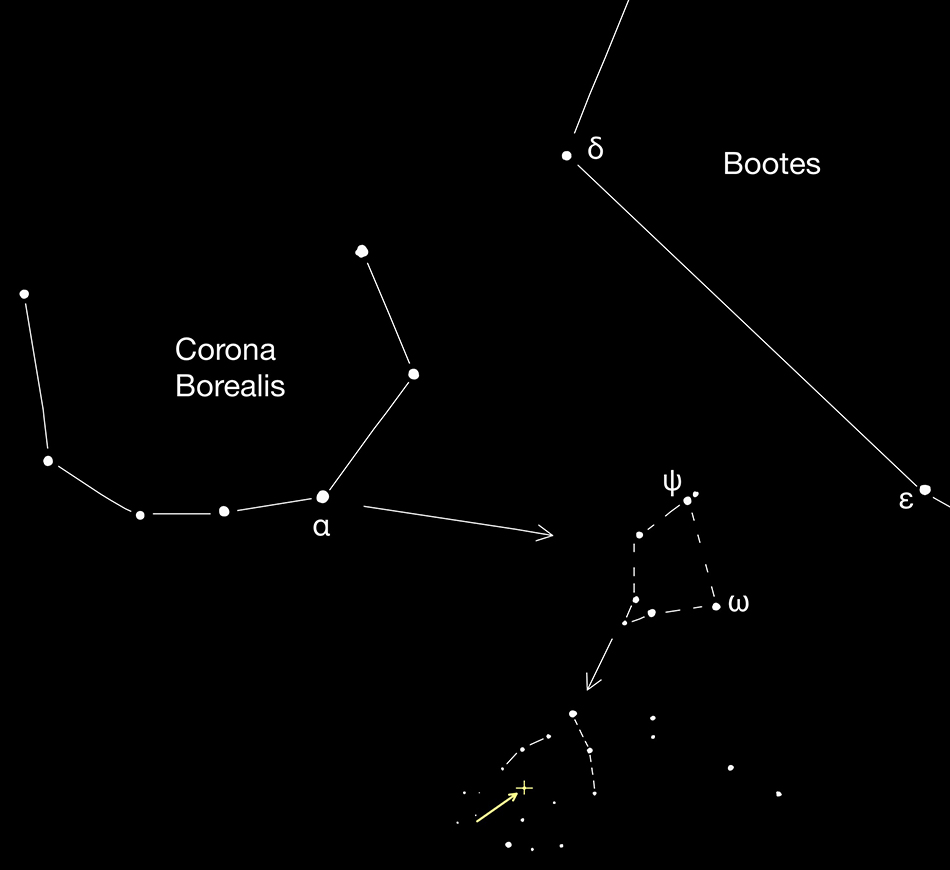

| Object name: | Constellation: | Coordinates: | Apparent size: | Visual brightness: |
|---|---|---|---|---|
| Hoag's object (PGC 54559) | Serpens | 15h17m / +21°35' | 0.28' x 0.28' | 16.4 mag |
The ring galaxy PGC 54559 (Hoag's object) in the constellation Serpens. The non-typical galaxy is named after the American astronomer Arthur Hoag (1921-1999) who discovered it in 1950 and identified it as either a planetary nebula or a peculiar galaxy.
A ring of young hot blue stars with an apparent outer diameter of 45" (121,000 light-years) circles the older yellow nucleus with an apparent outer diameter of 6" (17,000 light-years) of this ring galaxy. Hoag's object is approximately 600 million light-years from Earth (source: Wikipedia).
Forty-eight 3-minute exposures (146 minutes total exposure) at ISO 800 taken on May 25 / 26, 2020 were added for this shot with the DeepSkyStacker software and the final image processing was done in Photoshop.
Equipment: Canon EOS 450D Baader modified camera, TeleVue Paracorr Type II coma corrector, 16" f/4.5 "Ninja" dobsonian telescope riding on a dual-axis Tom Osypowski equatorial platform, Lacerta MGEN autoguider, Lacerta off axis system (field of view comparison: image of the moon with the same equipment).

